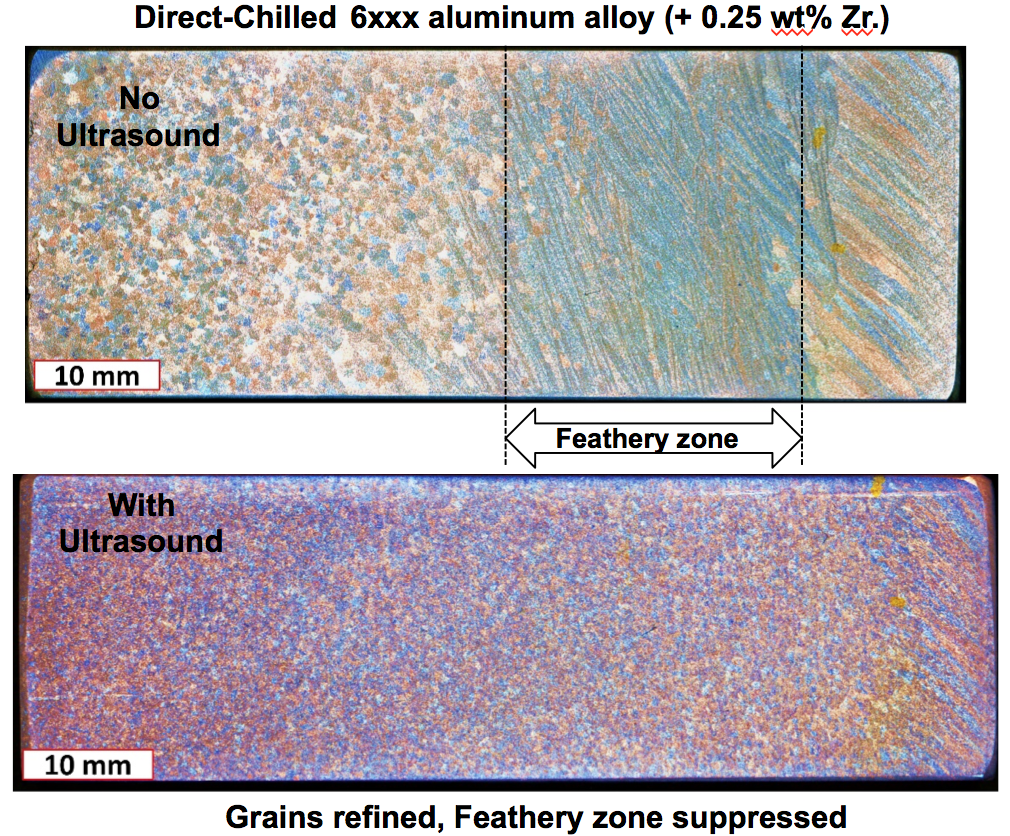Ultrasonic Melt Treatment


To refine grains in industrial casting, the common practice is to add grain refiner agents, such as AlTiB master alloys for Al-alloys. Ultrasonic melt treatment (UST) is an alternative technology of melt treatment that is efficient and environment friendly, with one of its main benefits being grain refinement of a cast product with the minimum or even without the addition of costly and environmentally harmful grain refiners.
Up until recently, controlling UST in industrial processes was rather qualitative and intuitive. Our Group in collaboration with Brunel University London (Prof. Eskin) and University of Greenwich (Prof. Pericleous) have developed a promising strategy for upscaling UST during direct-chill (DC) casting through a strategically-placed flow management system using partitions in the launder.
We have shown that position of partitions at the resonance length of 1λ across the launder improves the mean particle residence time by two times compared to the hot-top treatment while increasing the acoustic pressure by 50%.
This configuration optimizes the melt treatment efficiency. Microstructure analysis of an AA6XXX aluminium alloy with an addition of 0.25 wt% Zr showed that under UST in the launder the columnar and feather grains were replaced with equiaxed grains, grain size in the centre of the billet decreased two-fold while an additional 10% refinement achieved when partitions were used during UST-DC casting. The optimised UST in the launder open way to the effective treatment of large-volume melts using a single ultrasonic source. The findings are a stepping stone towards industrial exploitation of UST.
